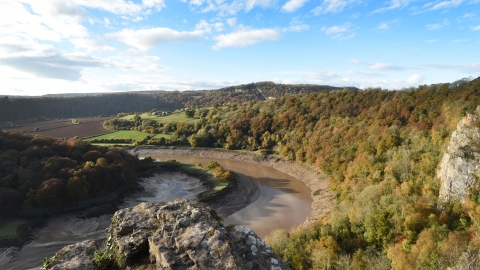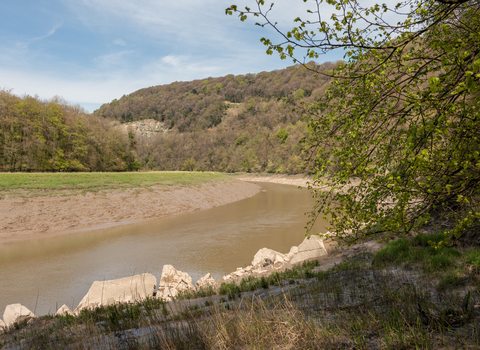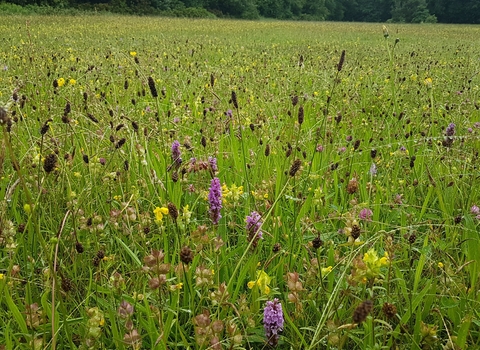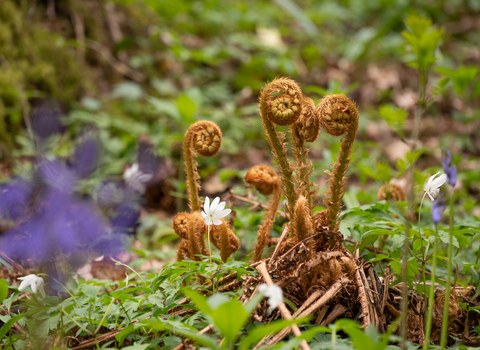
Rob Lacey
When visiting Lancaut please park in the designated parking bays and not on the grassy verges. Access for tractors, emergency vehicles, and other heavy machinery is required at all times to the farm at the bottom of the lane.
Location
Know before you go
Dogs
When to visit
Opening times
Open access throughout the yearBest time to visit
Spring to autumnAbout the reserve
Lancaut's south-facing cliffs tower over the River Wye and are regular nesting sites for peregrine falcons and ravens. The historic quarrying for limestone carried out at the nature reserve has created the conditions for a diverse ancient gorge woodland, populated by wild service, small-leaved lime, and wayfaring trees, among yew, beech, oak, ash and cherry. Lancaut also boasts saltmarshes and scree while the woodland found at Ban-y-Gor, a secluded, shady and somewhat mystical place, is filled with large coppiced and pollarded trees. These sit between larger and wind-blown species above a carpet of ferns and mosses.
While the older quarries are now filled with trees, the more recently abandoned quarries are great places to find wildflowers, as is the limestone ridge. Whitebeams share the cliff edges with hunting kestrel, sparrow hawk and goshawk. Cormorant and heron frequent the river, and its banks, along with an occasional seal on the spring tides.
Lancaut is also renowned for the views from Wintours Leap, a spectacular vista up and down the tidal river valley.
History
Lancaut is located around a narrow-necked promontory and was used as a defensive fort known as Spital Meend as long ago as the Iron Age. Limestone was quarried for agriculture and construction for many years, and fish such as salmon were trapped in weirs during Medieval times. This remote reserve was once a small settlement and retains the ruined walls of St James’ Church, now looked after by the Forest of Dean Buildings Preservation Trust. It’s thought that a leper colony was once situated here, a theory supported by the presence of medicinal plants near the church, including the non-native elecampane, which was once used for treating respiratory ailments, and the poisonous green hellebore - employed as a purgative.
The coppiced and pollarded hazel trees in Ban-y-Gor woods would once have provided a valuable crop. The name Lancaut is thought to be an Anglicisation of the Welsh Llan Cewydd, or Church of St Cewyd. Other historic references include ‘Wintour’s Leap’, named after the English Civil War Royalist leader Sir John Wintour, who marched forces from Lydney to Lancaut in an unsuccessful attempt to fortify a ford across the Wye and was forced to escape by boat, giving rise to the local legend that he had ridden his horse down the cliffs to safety. Lancaut was first classified as a nature reserve in 1971.
Species
Environmental designation
Other information
The cliffs at Lancaut are popular not only with birds, but with rock-climbers. Rock-climbing is permitted.



